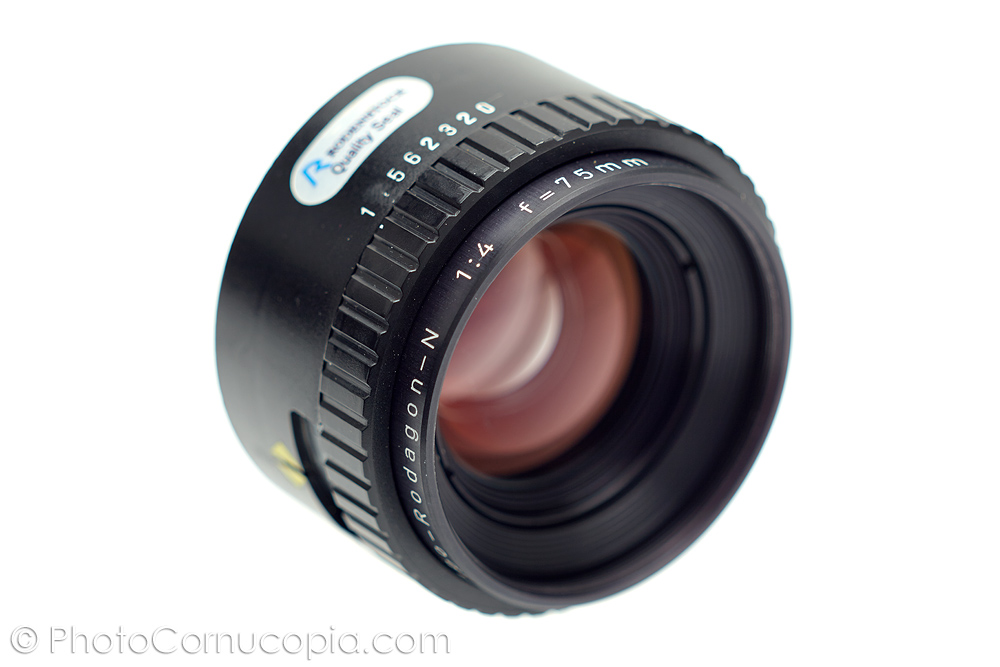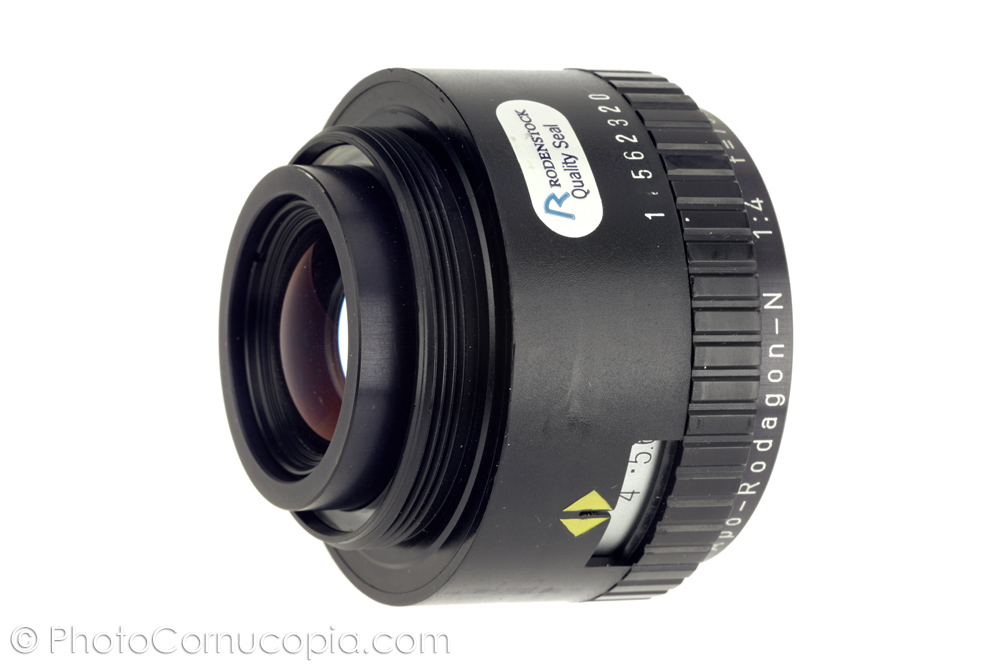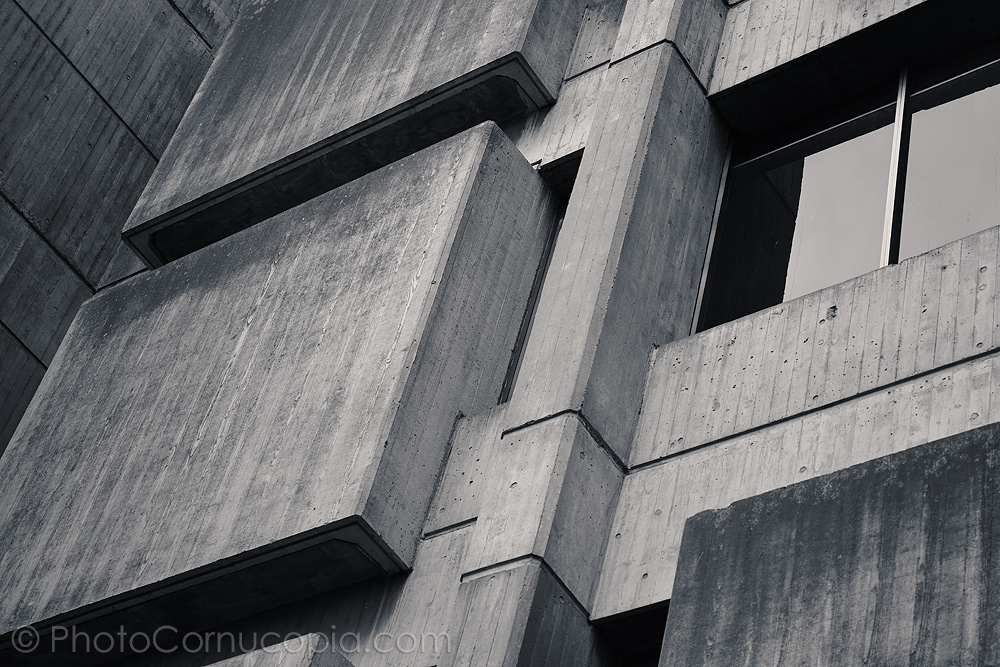|
Topic: |
Rodenstock Apo-Rodagon-N
4/75 |
|
Author/Copyright: |
John Jovic |
The Rodenstock Apo-Rodagon-N
75mm F4 is not a very common lens. The exact period that is was sold is
uncertain but it appears the lens was sold from approx 1998 to approx
2008[1].
Specifications
The engineering drawing and test report for the Apo-Rodagon-N 75mm lens
have been kindly supplied by Rodenstock (Germany) and are reproduced
here
with permission.
| |
 |
|
| |
|
|
| |
 |
|
| |
The engineering drawing is
dated 13th March 1998 whilst the test report is dated January 1999
so these two documents suggest the approximate date or era that this
lens started to be manufactured. |
|
The data in the table below has been
extracted from the above drawing.
| |
Rodenstock Apo-Rodagon-N 4/75 |
| Focal Length (mm): |
75 |
| Maximum aperture (F): |
4 |
| Lens construction (elements - groups): |
not stated |
| Angle of coverage: |
53° |
| Recommended negative size (mm): |
60x60 |
| Minimum aperture (F): |
22 |
| Number of aperture blades |
5 |
| Designed magnification: |
1:10 |
| Useful magnification range: |
not stated, at least 1:2-1:10 |
| Achromatized wavelength range (nm): |
|
| Distortion at basic magnification (%): |
|
| Focal length design value (mm): |
74.7 |
| Barrel outer diameter A (front) (mm): |
|
|
Flange mount thread size: |
39x1/26 |
|
Filter size (mm) |
M40.5x0.5 |
| Barrel outer diameter B (rear) (mm): |
|
| flange focal length (mm): |
68.7 |
| Back focal length (mm): |
59.3 |
| Distance from flange surface to the second principal point (mm): |
|
| Principal point spacing (mm): |
-2.5 |
| Total length (mm): |
|
| Weight (g): |
|
| Coating: |
|
|
Application Notes
The lens has a Leica or M39 x
1.0
mount and can easily be mounted to a camera using a helicoid or bellows,
depending on the intended application and magnification required.
The filter thread is the common (for enlarging lenses) M40.5x0.5 and
allows lens hoods or reversing rings to be used. A lens hood should be
used whenever possible.
Sample Images
Unless stated otherwise all the sample images below were photographed
using a Canon 5D2 and a Nikon PB-4 bellows. A lens hood was used
in all the images below.
This lens seems to have very high resolution and excellent colour and
contrast even wide open.
Like most enlarging lenses it shows some axial or Longitudinal CA but
not enough to be objectionable.
Although probably intended as a machine vision lens this lens may not
have been designed to photograph three dimensional objects so bokeh was
probably never a consideration in it's design. None the less this lens
shows relatively soft and smooth bokeh behind the focus plane and quite
harsh bokeh in front. The bokeh is typical of a lens which has been
under corrected for spherical aberration.
|
|
 |
|
|
|
Computar dL 5.6/135mm enlarging lens photographed
with a Rodenstock Apo-Rodagon-N 75mm F4 lens at F4 on a Canon 5D2
camera. |
|
|
|
|
|
|
|
 |
|
|
|
Computar dL 5.6/135mm enlarging lens photographed
with a Rodenstock Apo-Rodagon-N 75mm F4 lens at F4 on a Canon 5D2
camera. |
|
|
|
|
|
|
|
 |
|
|
|
Computar dL 5.6/135mm enlarging lens photographed
with a Rodenstock Apo-Rodagon-N 75mm F4 lens at F16 on a Canon 5D2
camera. |
|
|
|
|
|
|
|
 |
|
|
|
Computar dL 5.6/135mm enlarging lens photographed
with a Rodenstock Apo-Rodagon-N 75mm F4 lens at F4 on a Canon 5D2
camera. |
|
|
|
|
|
|
|
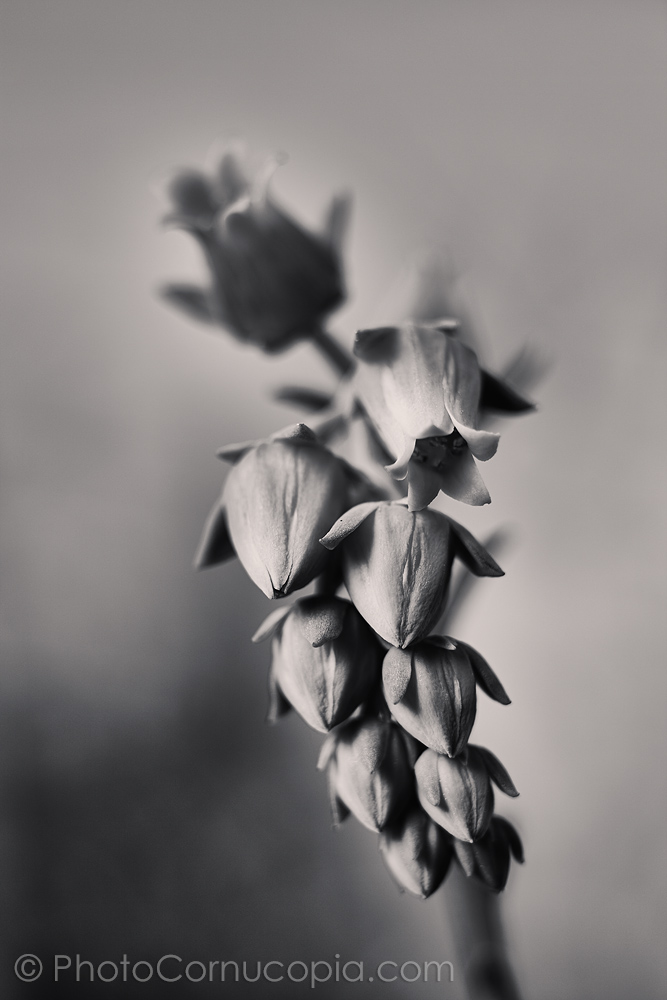 |
|
|
|
Photographed with a Rodenstock Apo-Rodagon-N 75mm F4 lens at F4 on a Canon 5D2
camera. |
|
|
|
|
|
|
|
 |
|
|
|
Photographed with a Rodenstock Apo-Rodagon-N 75mm F4 lens at F4 on a Canon 5D2
camera. |
|
|
|
|
|
|
|
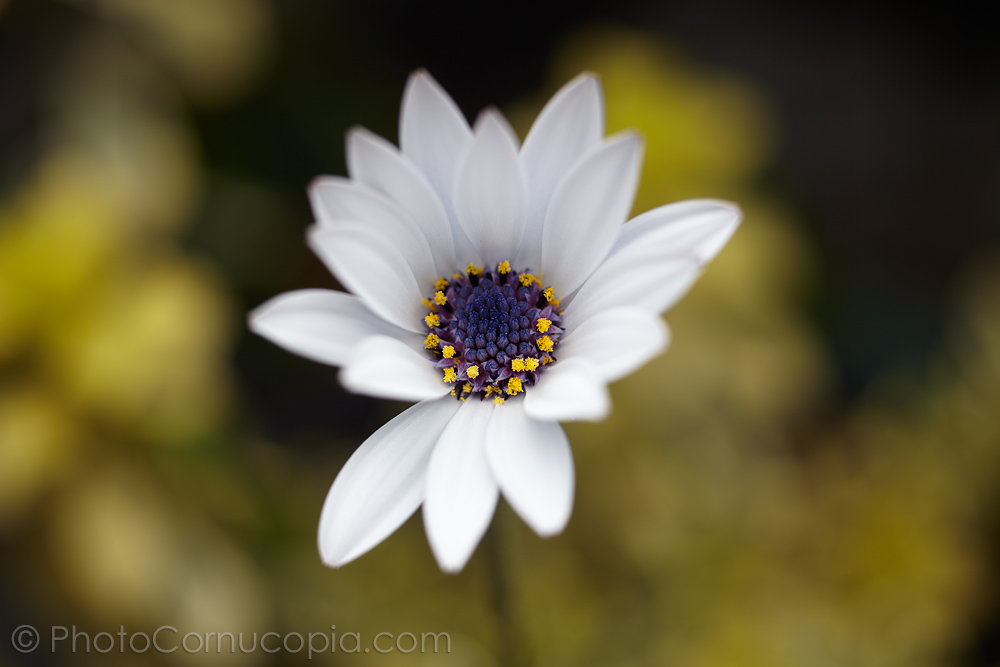 |
|
|
|
Photographed with a Rodenstock Apo-Rodagon-N 75mm F4 lens at F4 on a Canon 5D2
camera. |
|
|
|
|
|
|
|
 |
|
|
|
Photographed with a Rodenstock Apo-Rodagon-N 75mm F4 lens at F4 on a Canon 5D2
camera. |
|
|
|
|
|
|
|
 |
|
|
|
Photographed with a Rodenstock Apo-Rodagon-N 75mm F4 lens at F16 on a Canon 5D2
camera. |
|
|
|
|
|
|
|
 |
|
|
|
Photographed with a Rodenstock Apo-Rodagon-N 75mm F4
lens at F4 on a Canon 5D2 camera using a helicoid for focusing. |
|
|
|
|
|
|
|
 |
|
|
|
Photographed with a Rodenstock Apo-Rodagon-N 75mm F4
lens at F4 on a Canon 5D2 camera using a helicoid for focusing. |
|
|
|
|
|
|
|
 |
|
|
|
Photographed with a Rodenstock Apo-Rodagon-N 75mm F4
lens at F4 on a Canon 5D2 camera using a helicoid for focusing. |
|
|
|
|
|
Hot Spot or Flare Spot
The sample images below were photographed using a helicoid and the same
lens hood as all other sample images shown on this page yet some of
these images show a bright spot in the centre of the frame called a
Flare Spot or Hot Spot. Whilst this may not be entirely attributable to
the lens itself, which seems to show excellent flare resistance and very
high contrast in normal use, the use of helicoids and other focusing
mechanisms may contribute or even cause these issues when used in
certain circumstances. Whilst more testing is in order it is none the
less worth noting that the potential for a hot spot does exist under certain conditions.
Sharpness at Infinity
The images below show wide open centre and edge sharpness at Infinity.
It's common to see poor edge performance with enlarging lenses when
focused at Infinity however this lens seems to perform quite well.
| |
 |
|
| |
Photographed with a Rodenstock Apo-Rodagon-N 75mm F4 lens at F4 on a Canon 5D2
camera using a helicoid to enable infinity focus. See centre and
edge crops below. |
|
| |
|
|
| |
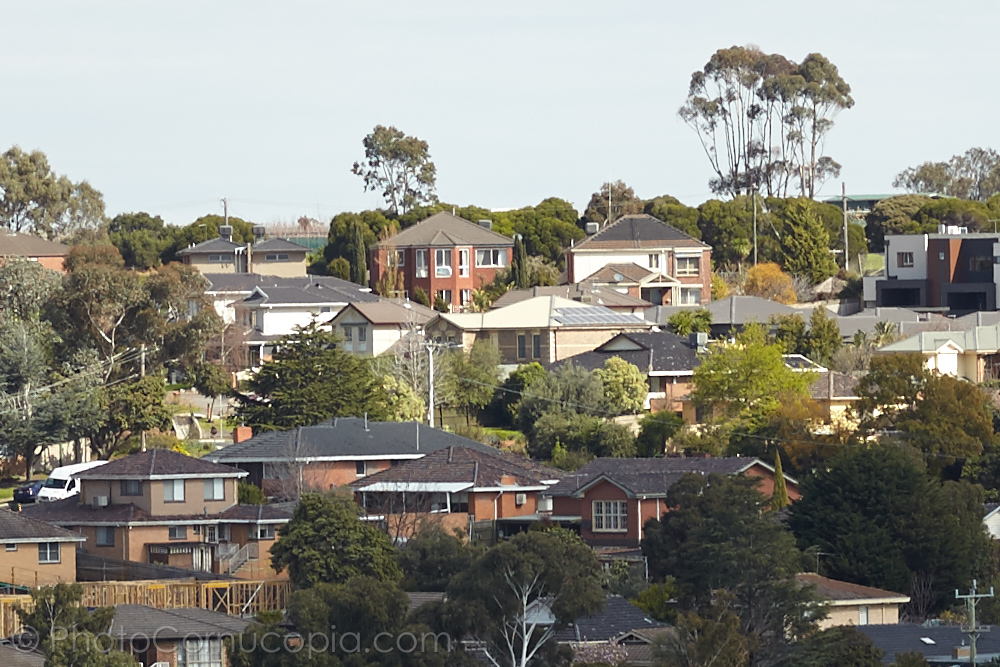 |
|
| |
Rodenstock Apo-Rodagon-N 75mm F4 lens at F4 on a
Canon 5D2 focused at infinity. 100% unsharpened crop from the centre
of the frame. |
|
| |
|
|
| |
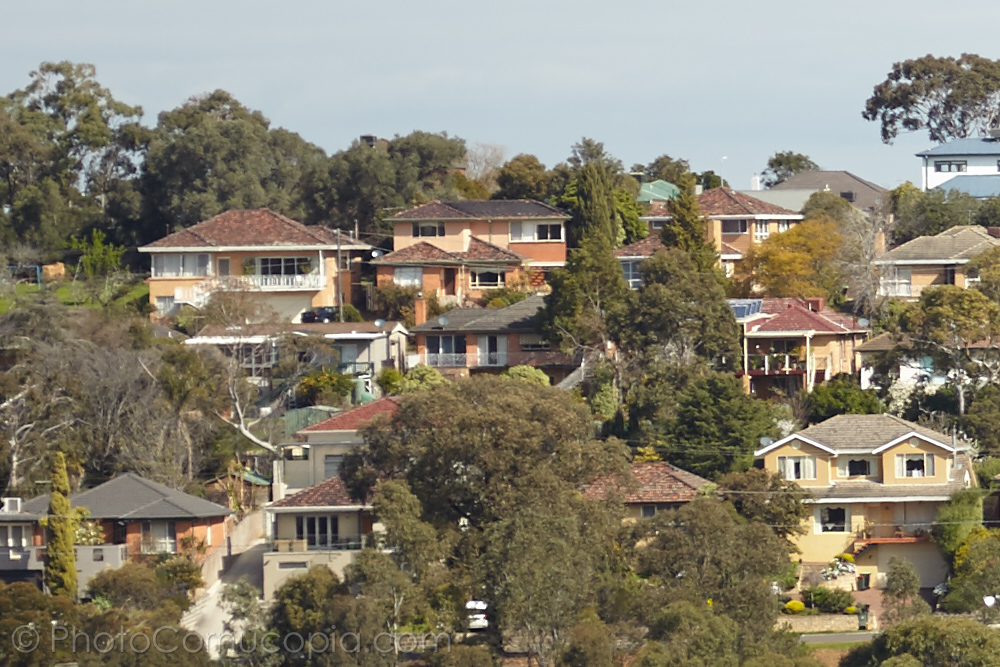 |
|
| |
Rodenstock Apo-Rodagon-N 75mm F4 lens at F4 on a
Canon 5D2 focused at infinity. 100% unsharpened crop from the left
edge of the frame. The lens was focused in the centre of the frame
and was not refocused for optimum focus at the left edge. |
|
Although this lens is not optimised for infinity there
does not appear to be any significant deterioration in image quality
even when used wide open. Rodenstock Apo-Rodagon-N lenses are typically
intended to be used stopped down one or two stops depending on the lens
in question.
|
References |
|
|
|
|
[tbc] |
To Be Confirmed. The information has not been
confirmed by a credible source. |
|
[pc] |
Photo Cornucopia. Measured or personally observed
by the Author. |
|
[1] |
"Linos Präzisions-Objektive". http://www.stemmer-imaging.de.
accessed July 29, 2015
http://www.stemmer-imaging.de/media/uploads/websites/documents/products/optics/Qioptiq/de-Qioptiq-Rodagon-OLIN1-201311.pdf |
|
|
|
